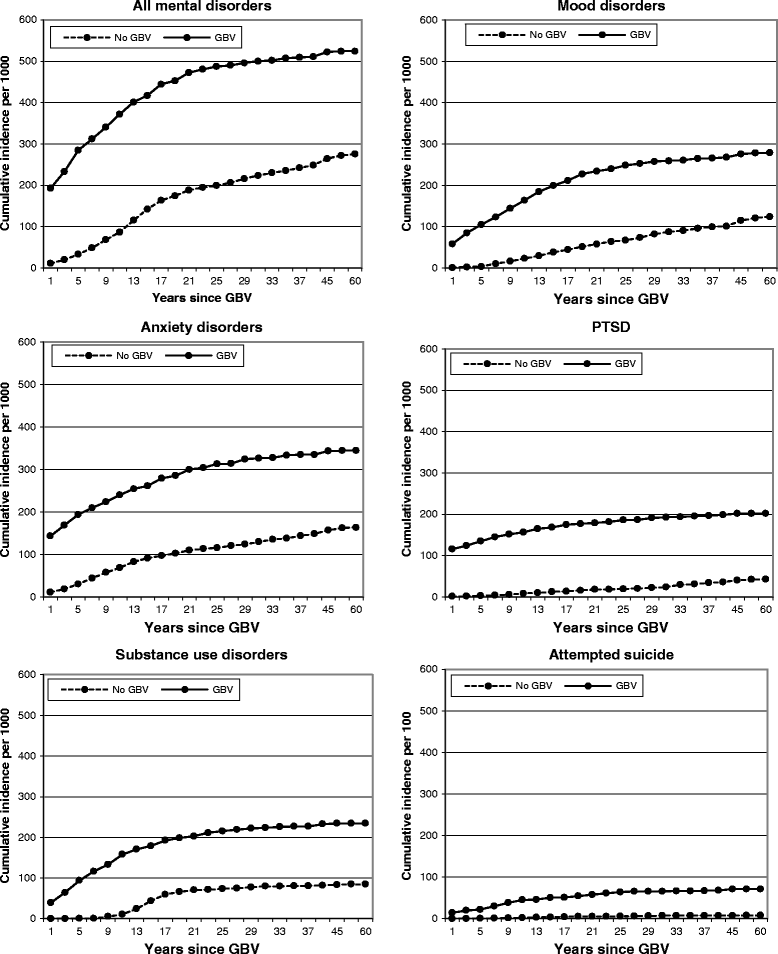Onset of common mental disorders and suicidal behavior following women's first exposure to gender based violence: a retrospective, population-based study
- PMID: 25403750
- PMCID: PMC4240847
- DOI: 10.1186/s12888-014-0312-x
Onset of common mental disorders and suicidal behavior following women's first exposure to gender based violence: a retrospective, population-based study
Abstract
Background: Women exposed to gender-based violence (GBV) experience a high rate of common mental disorders and suicidal behaviour ("mental disturbance"). Little is known however about the timing of onset of mental disturbance following first exposure to GBV amongst women with no prior mental disorder.
Methods: The analysis was undertaken on the Australian National Mental Health and Wellbeing Survey dataset (N = 8841). We assessed lifetime prevalence and first onset of common mental disorder and suicidal behaviour (mental disturbance) and exposure to GBV and its first occurrence based on the Composite International Diagnostic Interview Version 3 (WMH-CIDI 3.0). We used the Kaplan-Meier method to derive cumulative incident curves for first onset mental disturbance. The two derived subgroups were women who experienced GBV without prior mental disturbance; and women never exposed to GBV stratified to match the former group on age and socio-economic status.
Results: For women with no prior mental disorder, the cumulative incidence curves showed a high incidence of all mental disturbances following first GBV, compared to women without exposure to GBV (all log rank tests <0.0001). Nearly two fifths (37%) of any lifetime mental disturbance had onset in the year following first GBV in women exposed to abuse. For these women, over half (57%) of cases of lifetime PTSD had onset in the same time interval. For GBV exposed women, half of all cases of mental disturbance (54%) and two thirds of cases of PTSD (66.9%) had onset in the five years following first abuse. In contrast, there was a low prevalence of onset of mental disturbance in the comparable imputed time to event period for women never exposed to GBV (for any mental disturbance, 1% in the first year, 12% in five years; for PTSD 3% in the first year, 7% in five years).
Conclusions: Amongst women without prior mental disturbance, common mental disorders and suicidal behaviour have a high rate of onset in the one and five year intervals following exposure to GBV. There is a particularly high incidence of PTSD in the first year following GBV.
Figures
References
-
- Rees S, Silove D, Chey T, Ivancic L, Steel Z, Creamer M, Teesson M, Bryant R, McFarlane AC, Mills KL: Lifetime prevalence of gender-based violence in women and the relationship with mental disorders and psychosocial function.JAMA 2011, 306(5):513. - PubMed
Publication types
MeSH terms
LinkOut - more resources
Full Text Sources
Other Literature Sources
Medical


